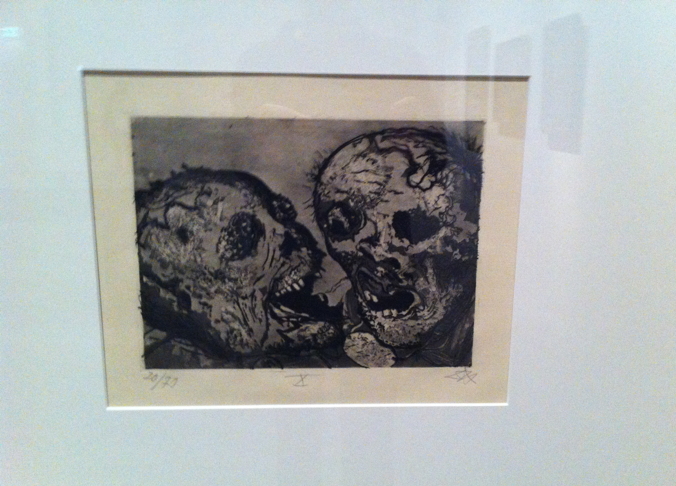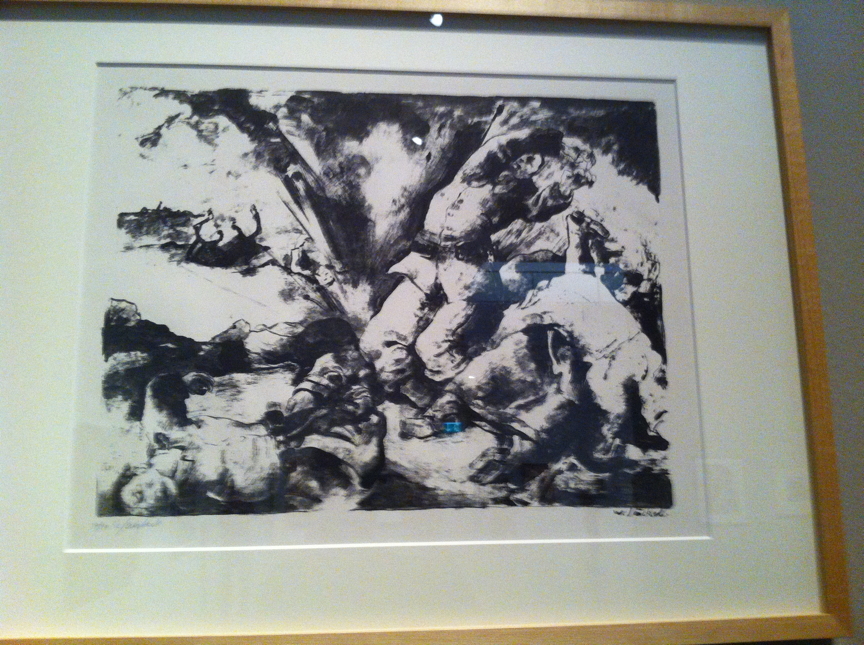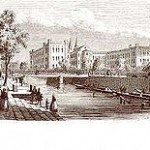100 Years ago the World was at the Brink of WW I
In July 1914 WW I started as a global war concentrated on Europe. It lasted until November 1918. Around 14 million combatants were killed.
The approaches of German intellectuals and artists were torn. Most were passionate advocates in the beginning, lot’s of them got cured of heroism and pathos facing the terrible bloodshed WW I brought on earth.
In Winter 2013 the Berlinische Gallery showed a fascination show about modern art in Vienna and Berlin from the periods of the Secessionists until the New Objectiveness.
The selection here shoes mainly drawings of some central figures of German modern artists. “March march Hurrah”, a Lithography by Erich Büttner appeared in December 1914 when the war just had started. Most Germans were still in the euphoria of having to march against some “unacceptable insults”, while Kaiser Wilhelm was also dreaming of gaining some new authority on land that wasn’t his.
The works of Otto Dix and George Grosz focused on the agony n d losses of the first war, that was fought with weapons of mass destruction. Chemical weapons for example were one of the evil innovations of WW I. Tahure is a small town in the French Champagne, that was battlefield for more then two moth. German troops were defeated after American divisions had entered the war beside the Entente.
Grosz produced 17 brilliant drawings for one of the first theatre-performances of Schwejk. “The Good Soldier Švejk” is the abbreviated title of an unfinished satirical novel by Czech anarchist Jaroslav Hašek. The novel is set during WW I in Austria-Hungary, a multi-ethnic empire full of long standing tensions. The story begins in Prague with news of the assassination in Sarajevo that precipitates WW I. Schwejk displays such enthusiasm about faithfully serving the Austrian Emperor in battle, that no one can decide whether he is merely an imbecile or is craftily undermining the war effort. Through the whole book Schwejk is either punished or released of any doubts on his loyalty. There is only one stupidity beating Švejk, it’s the idiocy of the authorities itself. Until today the Schwejk is a beloved motive for Germans to mock about blind obedience and power abuse of authorities. In Grosz drawing the German and the Austrian Emperor, allies in WW I, appear beside a priest representing the church and Schwejk standing for the submissive Subject.
Charlotte Berend made a serial of drawings on dancer Anita Berber, who would perform in the Variatés of Berlin in 1919. In the Weimarer Republic restricted family rules and open frivolity would live side by side specially in the German Capital Berlin. The amusement sector boomed after the war. While lot’s of people were hungry, others would drink champagne in exclusive spaces.
At the brink of WW I the world had lived epochemaking changes culturally with music pieces like “Le Sacre du Primtemps”, the psychology of Sigmund Freund, dancers like Isadora Duncan, literature like the ones of Franz Kafka and the Bloomsbury Group, fine artists like the Blue-Rider Group. WW I gave the start to more maturity and desperation as well.
100 years later there is still a gap between the avant-garde and the masses in a more globalized form. It is startling though to witness, how culture is passing politics in almost all developing countries. Hurrah we can say in an aberration of the sense it has had once.
Related Posts
Tags: Anti War, Art, Berlin, Drawing, Feed the Sence, George Grosz, germany, Lithografy, Otto Dix, The Passenger, WWI
Trackback from your site.










